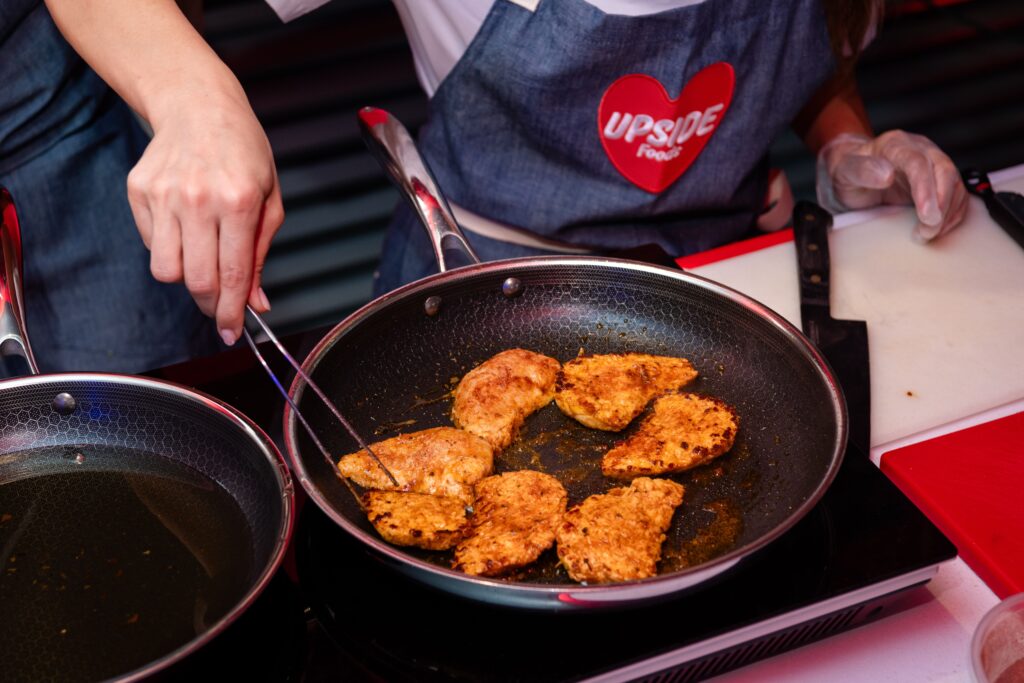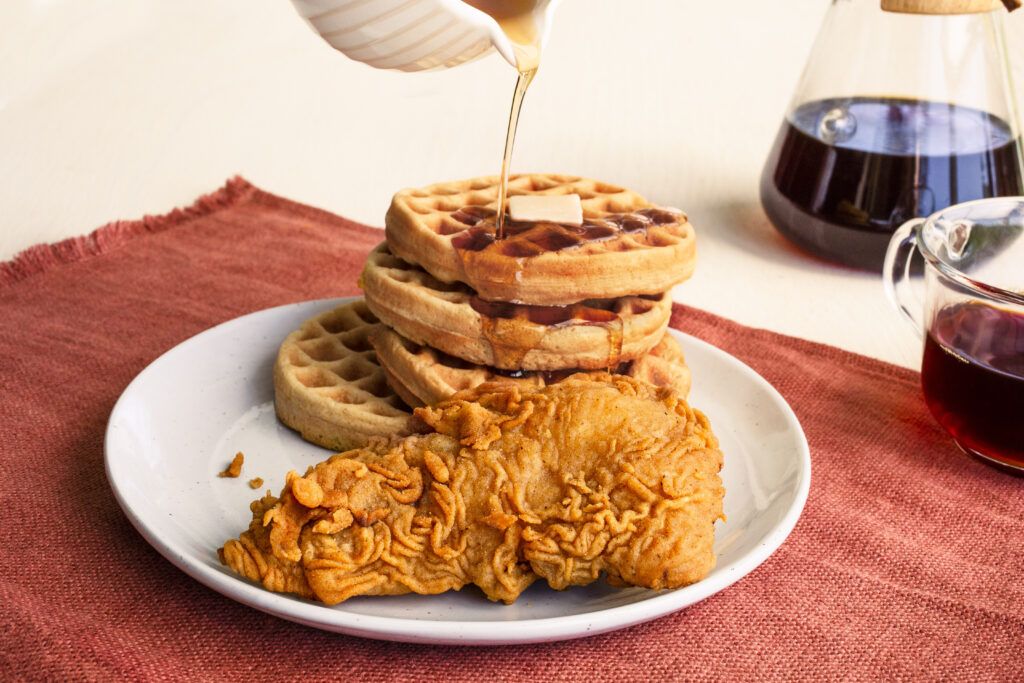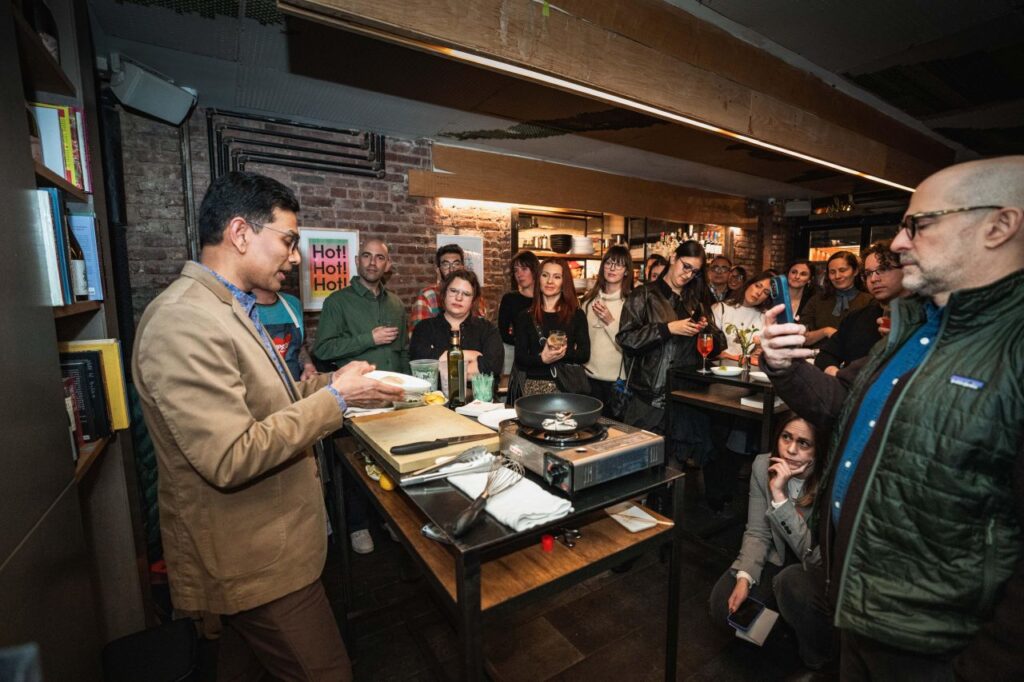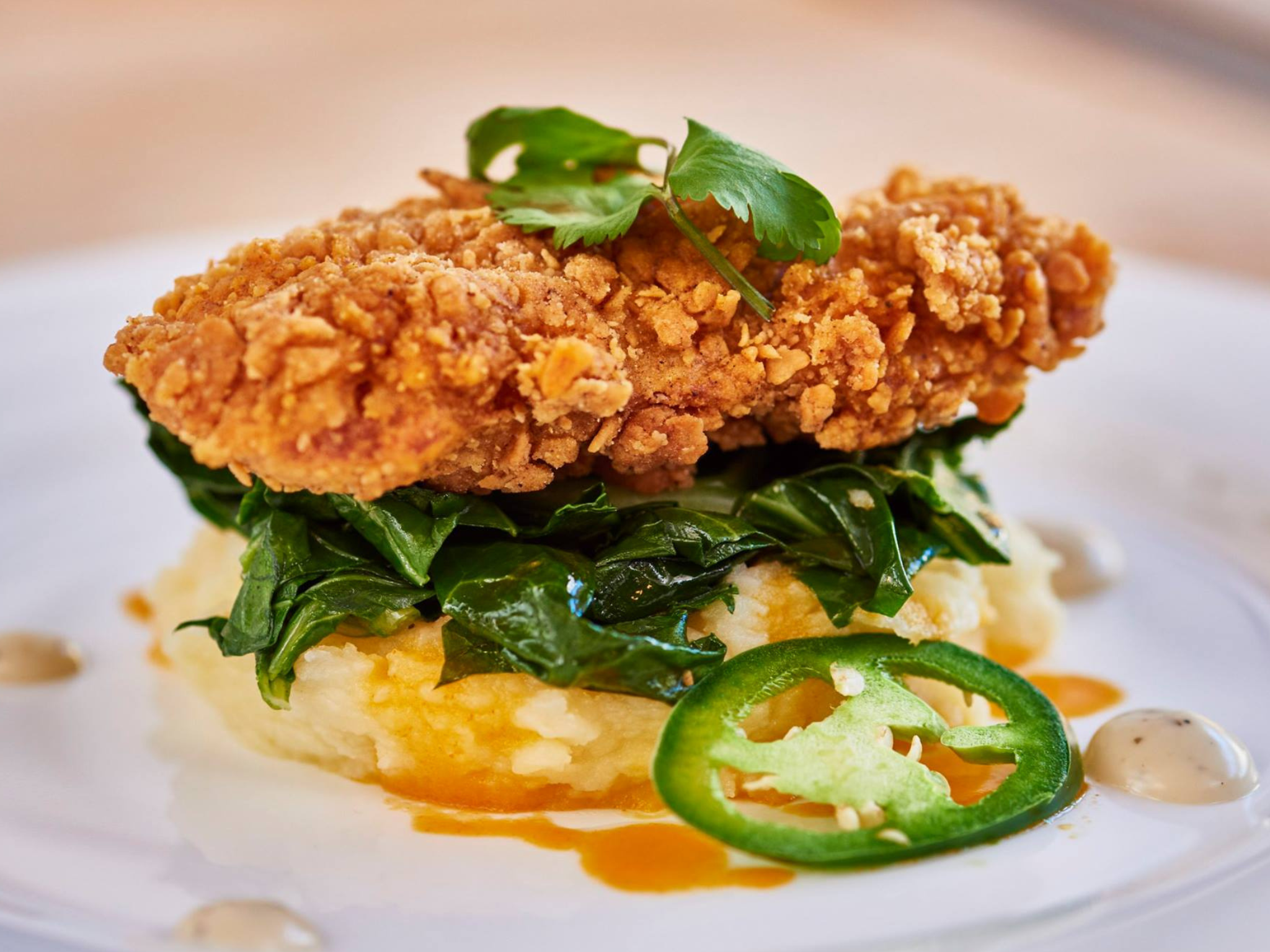Upside Foods Eyes Approval For Sale of New Shredded Chicken Products at US Restaurants by End 2025
8 Mins Read
Californian cultivated meat pioneer Upside Foods is aiming to launch chicken shreds – its second product – in the US by year-end.
Despite its legal battle against Florida’s leaders and an uncertain political landscape around alternative proteins, Upside Foods is looking to move forward.
While the Californian startup is cleared to sell its cultivated chicken fillet – containing 99% chicken cells – it stopped selling this at restaurants last year with the product is in relatively tight supply. Upside continues to sell the filet for bespoke events, in addition to using it for marketing and advocacy purposes.
What it is hoping to commercialise are its chicken shreds, which are produced differently and require separate authorisation from the US Department of Agriculture (USDA) and the Food and Drug Administration (FDA). The company is hopeful that it can bring these to restaurants stateside by the end of 2025.
The shreds are made using suspension technology, instead of the tissue process used for the fillet. “Because the cells are grown in suspension, they don’t have anything to grip on. So after we harvest the cells, we are removing moisture – the suspension fluid – as much as we can,” says Melissa Musiker, head of communications at Upside Foods.
According to Musiker, this second innovation has been in the works for a long time and was the basis of Upside’s $400M Series C raise in 2022. The shreds are blended products – a combination of cultivated chicken and plant-based ingredients.
Still in R&D, the current version includes soy protein, wheat gluten (Upside says it is working to remove the latter) and a plant-based oil, in addition to the protein and fat from the chicken cells.
While the inclusion rate of the cultivated chicken is yet to be determined, Musiker confirms that it will be the predominant ingredient on the label. “It’s a differentiator in the industry at this point. Because some of these other products have relatively low inclusion rates. Our goal is to have it be the predominant ingredient on a label,” she says.
Upside Taps Distributor That ‘Put Impossible Foods On The Map’

Musiker is speaking to me a fortnight after Upside Foods held a tasting in collaboration with meat purveyor Pat LaFreida in New York City, one of several such events it has hosted since hitting pause on its restaurant plans last year.
The startup’s chefs prepared the shreds in various formats, including a yoghurt-marinated chicken shawarma-taco, a breakfast sausage, empanadas, and a fried version. “It was delicious. I personally hadn’t had it that way before,” says Musiker.
“We’re partnering with different people and groups, leveraging their relationships and their validation to bring more people into the room and get them to try the product for the first time,” she explains.
She clarifies that there hasn’t been a formal partnership announcement with the meat purveyor yet, but adds that Upside Foods is “looking forward to doing so soon“.
Musiker says LaFreida has a great deal of experience introducing new alternative ingredients to the market, and his support has helped inform its decision to start in B2B for the chicken shreds.
“Pat and his team are so supportive of what we’re doing. They are pioneers in bringing alternative proteins to the Mid-Atlantic region of the US. They were the first distributor of Impossible Foods and really helped put them on the map,” she says.
“We just feel Pat gets it. He and his team really understand the issues that are going on and the reasons why this kind of product can be appealing, and we’re especially gratified just how much they like it.”
Eventually, Upside Foods wants to bring its product to supermarket shelves too, but given the production scale-up this requires, it remains “several years away”.
Upside Foods signed a lease on an 187,000 sq ft facility in Illinois in 2023, which would have been able to produce 30 million lbs of cultivated meat a year. However, financial challenges and strategic pivots saw the company put the project on hold.
“We’re currently renovating our production facility in Emeryville, EPIC, to expand capacity and make it fit-for-purpose, to produce a commercial volume of the suspension [chicken],” reveals Musiker.
In its current form, this plant is designed to produce 50,000 lbs of cultivated meat per year, with the ability to expand up to 400,000 lbs. With the renovation, this capacity will be significantly upgraded.
By early 2024, Upside Foods had conducted dozens of production runs at a 2,000-litre scale, tech transferred multiple processes into the facility, and produced enough cells to make thousands of lbs of its shredded chicken in the last few months.
‘Not ready to throw in the towel’ with cultivated meat bans

Cultivated meat has been part of a culture war in the US, where states like Florida and Alabama have banned it and a dozen others have attempted to do the same.
Upside Foods is in the heat of it all, suing Florida for its law, although a judge has denied the company a preliminary injunction that would have allowed it to serve cultivated chicken at trade shows.
“We knew that this was going to take time,” Musiker says of the lawsuit. “This is going forward exactly the way we thought it would. [But] we’re hopeful that the constitution’s on our side.
Musiker acknowledges that the legislative attacks are a disappointing distraction, but she calls these hurdles “part of the reality” the industry has to operate in though the company is committed to bringing cultivated meat to all Americans.
“We’re not ready to write off potential consumers in Florida and Alabama or any of the other states that are contemplating this ban. We think they have a right to buy it and try it and see if they like it. If they don’t want to buy it and try it, don’t.”
Upside in ‘ongoing conversations’ with regulators
Regarding dossier submissions, Musiker told Green Queen: “We are in ongoing conversations with the regulatory agencies”, adding that it has been a “productive process”.
With Donald Trump back as president, the industry’s short-term future is full of uncertainty. And with Robert F Kennedy Jr in line to be health secretary, there have been suggestions that the regulatory pathway for novel foods could become much more complicated.
Musiker wouldn’t be drawn on the political discourse, but did note that “most of the work that we did to get the fillet approved was under the first Trump administration”.
“This is bigger than us, right? There are precedents that are beyond just what’s happening in cultivated meat. And that’s part of why we’re committing resources to move this through the process, as opposed to just saying: ‘Fine, we won’t sell it in these states and we’ll give up.’ We’re not ready to throw in the towel yet.”
Is Upside Foods not worried? “We are always worried – we were worried before and will remain worried,” she suggests. “It would be wrong for us to take anything for granted… We’re doing everything the same today as we were on November 4.”
She adds: “We’re gonna continue moving forward, and we remain optimistic that we’ll be able to do a commercial launch in 2025.”
‘Making smart decision to maintain runway’

Investors seem to be distancing themselves from the cultivated meat category, pouring in just half as much money in the first nine months of 2024 than they did in all of 2023, and hundreds of millions less than in the boom years of 2020-2022.
Upside Foods has had its share of financial challenges too, citing “political, regulatory and macroeconomic headwinds” behind its decision to lay off 26 employees last summer.
“Our focus must now narrow to a tighter set of priorities that pave the way for our product launches in the next two years,” co-founder and CEO Uma Valeti wrote in an email to employees last July. “We need to deliver on the work that remains, especially on critical milestones that are yet to be hit or are delayed.”
Asked about the company’s financial health, Musker says: “We know we’re in a privileged position. We’re making smart decisions to maintain runway for what we need to get done at this phase. We are just being thoughtful about how we spend money and what we invest in, who we hire and when we hire them.”
She acknowledges that there are other companies in much more constrained circumstances, which could run out of funds before they reach approval. “That’s scary for the industry. So we’re hopeful that there won’t be additional hurdles placed on companies,” she says.
Clearing these obstacles would “be consistent with the principles and some of the messaging coming out of the administration about minimising barriers to innovation and regulatory hurdles”, she adds.
Tasting is believing
Upside Foods is planning more tasting events in the months ahead. “Tasting is believing,” says Musker. “When they try it, they like it, and it minimises whatever mental barriers they might have had, And then they start to see the potential of it, they start to think past: ‘Oh, this is going to be expensive or different,’ or: ‘How am I going to explain this to my customers?’”
She highlights that tastings can be beneficial for not just chefs and restaurants, but also policymakers and regulators. “Obviously, we want people to sign up and be a commercial partner. But the secondary goal that we have is to just get people to try it for the first time,” she says. “It’s much less intimidating when you’ve tried it.
“It’s literally just a chicken. Who would be afraid of a chicken?”
This article has been updated on 31 January with clarifications and added context from Upside Foods.



